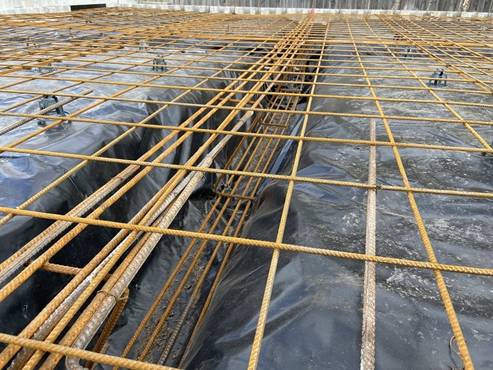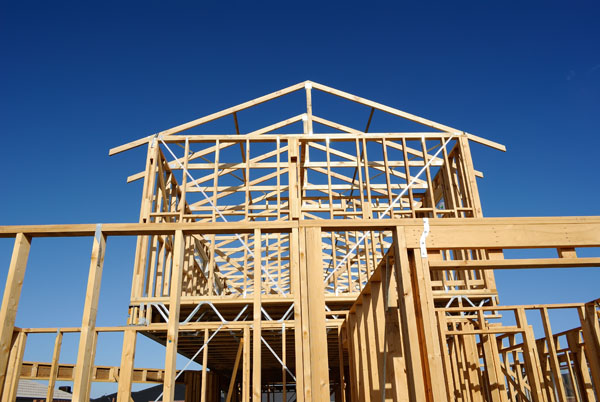Building Construction Full Scale Inspection
Due to its strong specialization, the construction industry often has four major blind spots for ordinary individuals during the entire construction process. Only by hiring a professional third-party inspection team can buyers effectively understand the entire process, safeguard their own rights, and ensure that they remain in an advantageous position throughout the construction process.
Physical Blind Spots in the Construction Process
Building a house is a cyclic project that progresses in stages. The final presentation to the customer is just the exterior of the project. Specific details such as materials and techniques used internally must be controlled during the construction process to understand the internal structure’s “health.” If the foundation, walls, and other components are completed, the internal framework becomes inaccessible for inspection. Therefore, phased professional engineering inspections can effectively mitigate the physical blind spots in the project.
Time Blind Spots in the Construction Process
In general, the entire construction cycle for an ordinary house takes about 12 months. Monitoring at each significant milestone and promptly addressing issues is essential to ensure the overall quality standards of the entire project. Missing these milestones could result in fatal risks if structural issues arise.
Regulatory Blind Spots in the Construction Process
Many customers mistakenly believe that Australia has a comprehensive construction regulatory system, where Building Surveyors oversee and ensure housing quality and safety. However, Building Surveyors only confirm if the building complies with safety regulations and if core components such as beams and columns match the drawings in terms of dimensions. More detailed aspects such as craftsmanship, materials, and quality are the homeowner’s responsibility to monitor.
Insurance Blind Spots in the Construction Process
Although many construction contracts include warranties for several years, these warranties typically apply only to the main structural components. If issues arise with these components, it often necessitates extensive repairs, incurring substantial costs. At such times, builders often employ delay tactics, leaving homeowners to cover repair expenses in terms of money, time, and effort. Builder’s warranties are only claimable when the developer goes bankrupt, rendering them of limited assistance to homeowners.
Advantages of Full Scale Inspection

Control the 5 Key Stages,Effectively Avoiding Blindspots
Footing and Slab
Standard Foundation Inspection requires the inspector to assess the groundwork preparation before pouring the concrete.
The foundation is the lowest structural layer of a house, and once the concrete is poured, there is no access for further inspection. Therefore, it’s crucial to ensure that these preparations align with design requirements and building standards before the concrete is poured.
Defects in the foundation can lead to very serious consequences, sometimes not immediately evident and might only become apparent after several years.
To ensure that foundation construction fully complies with Australian building regulations, the Evergrand team coordinates with the builders. Prior to pouring the concrete, they visit the site to inspect various construction aspects. This inspection covers whether excavation work meets standards, if foundation dimensions meet design requirements, whether moisture barriers are intact, correct placement and sizing of reinforcement bars, proper installation of reinforcement supports, accurate positioning of underground pipes, installation of termite barriers, and correctness of reinforcement fixing and overlapping.
HDA Building produces detailed on-site inspection reports, clearly outlining all defects and non-compliant areas. They oversee prompt corrective actions by builders to ensure that necessary corrections are made before pouring, safeguarding the solidity and safety of the house’s foundation.


Frame Inspection
This phase primarily involves comprehensive inspection of the construction of the house’s structural framework, ensuring that the building’s main frame complies with design requirements and Australian building standards.
Key inspection points: Verify if structural material assembly is compliant, confirm conformity with stress grade requirements, assess the compliance of bracing or reinforcement assemblies, validate the adequacy of structural beams and their supports, evaluate the connection of the roof or floor and the transfer of loads, and assess the compliance of link reinforcement assemblies. Additionally, check if ceiling heights and wall surface straightness adhere to standards.
Lock-up Inspection
The main inspection components include:
- Installation of rainwater gutters and waterproof protective panels.
- Proper installation of roof tiles or metal roofing according to standards.
- Installation of external wall finishes, including compliance with installation standards for autoclaved aerated concrete panels and proper bricklaying techniques.
- Verification of waterproofing and moisture resistance for doors and windows.
- Adequacy of moisture-resistant techniques for wall surfaces.
- Proper placement of brick linking components and termite barriers in accordance with standards.
- Verification of alignment of electrical and plumbing lines with the architectural drawings.


Fitout Stage
During the interior decoration phase, inspections must be conducted before the builder proceeds with painting and laying tiles. This ensures that hidden issues are promptly identified. Key aspects include:
- Verification of completion of waterproofing for bathrooms or other wet areas.
- Confirmation of proper installation of gypsum or cement boards.
- Assessment of the installation of door frames and window frames.
- Inspection of alignment and installation of skirting boards, doors, wardrobes, cabinets, sinks, and basins in accordance with the architectural drawings.
- Verification of proper positioning and connection of pipes and drainage in compliance with standards.
Final Handover Inspection
- Completion of installation and testing of all designated appliances.
- Verification of compliant plumbing installation and proper tiling craftsmanship.
- Confirming the safe installation of showers in accordance with safety standards.
- Ensuring the installation of towel racks, door stops, and locks meet standards.
- Assessing the quality of paintwork.
- Ensuring outdoor structures like pergolas and railings adhere to safety standards.
- Verification of compliance for rainwater tanks, retaining walls, and garden drainage systems.
- Checking for flaws in exterior paintwork and ensuring no accessories are omitted, such as mailboxes.
The entire process involves detailed inspection and documentation of every detail of the house. Any identified issues will be recorded in the report, and precise locations of concerns will be marked on-site. This process allows you to address the issues found during inspection and ensure that the delivered house meets the required quality standards before finalizing the handover with the builder.




